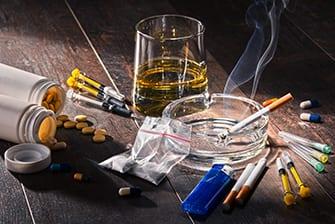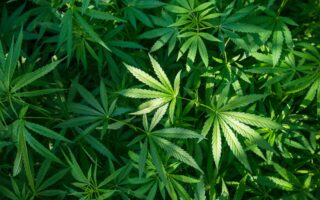Title: The Teenage Brain: Unraveling the Impact of Drugs
As a symphony of neurons and synapses, the teenage brain is a remarkable composition in the midst of evolution. It’s a time when identities are being formed, emotions are amplified, and the world feels endlessly inviting yet unpredictably daunting. Amidst this tumultuous phase, the allure of drugs can take on a potent resonance, often cloaked in a veil of curiosity and rebellion. But how do these substances, whether illicit or legal, alter the intricate melody of a developing mind? In this exploration, we will delve into the biochemical nuances of drug effects, shedding light on how they can shape, disrupt, and redefine the neurodevelopmental landscape of adolescents. Join us as we navigate the complexities of addiction, the science behind substance use, and the lasting consequences that can echo through the corridors of young lives.
Table of Contents
- Understanding the Adolescent Brain: A Window into Vulnerability
- The Impact of Substance Use on Emotional Development
- Cognitive Consequences: How Drugs Alter Thinking Patterns
- Building Resilience: Strategies for Prevention and Support
- Q&A
- Future Outlook
Understanding the Adolescent Brain: A Window into Vulnerability
The adolescent brain is a complex landscape that is still developing throughout the teenage years. During this pivotal period, the brain undergoes significant changes that affect both emotional regulation and cognitive function. As the prefrontal cortex—the area responsible for decision-making, impulse control, and reasoning—matures, the limbic system, which governs emotions, is already in overdrive. This imbalance creates a unique vulnerability to substance use. Drugs can hijack the natural reward pathways, leading to heightened sensations of pleasure but also potentially paving the way for addiction and risk-taking behaviors. A teenager might initially embrace a substance for its perceived benefits but may become ensnared in a vicious cycle of dependence, thanks to their brain’s malleable nature.
- Enhanced Emotional Responses: Drugs can amplify feelings, making joy feel ecstatic but sadness feel unbearable.
- Risk-Taking Behavior: The impulsivity present in adolescents can lead to experimentation with substances without fully grasping the consequences.
- Cognitive Disruption: Substance use can impair memory and learning capabilities, detracting from academic performance.
As we explore further, it’s essential to understand the long-term implications of drug use on a developing brain. According to recent research, prolonged exposure to substances during this formative stage can result in permanent alterations in brain structure and function. Short-term memory deficits, reduced attention span, and even changes in emotional regulation are just the tip of the iceberg.
| Type of Drug | Potential Short-Term Effects | Potential Long-Term Effects |
|---|---|---|
| Alcohol | Poor judgment, impaired coordination | Memory problems, addiction |
| Cannabis | Altered perception, anxiety | Cognitive deficits, mental health issues |
| Stimulants | Increased energy, euphoria | Heart problems, addiction |
The Impact of Substance Use on Emotional Development
Substance use during the teenage years can have profound effects on emotional growth and regulation. At this critical developmental stage, the brain is particularly malleable, and exposure to drugs can disrupt the intricate balance of neurotransmitters responsible for emotions. Adolescents who experiment with substances may experience heightened feelings of anxiety, depression, or even mood swings that can complicate their social interactions. The abrupt changes in brain chemistry can lead to increased impulsivity and decreased emotional resilience, making it difficult for teenagers to cope with the normal stresses of growing up.
Some of the most commonly used substances can significantly alter emotional responses and relationships. For instance, alcohol and stimulants may provide immediate relief or euphoria but can ultimately result in emotional numbing or heightened irritability. The long-term impact can include a diminished capacity to forge healthy relationships, process emotions, or even make sound decisions. This cycle of emotional instability often continues into adulthood, transforming typical teenage challenges into lifelong hurdles. It is important for parents, educators, and communities to be aware of these consequences and support healthy emotional development through open conversations and education about substance use.
Cognitive Consequences: How Drugs Alter Thinking Patterns
Drugs, particularly when consumed during the critical developmental phase of adolescence, can have profound effects on cognitive functions and thinking patterns. The teenage brain is still undergoing significant changes, making it more susceptible to the alterations induced by substances. Impaired judgment, decreased memory retention, and altered perception are just a few ways in which drug use can disrupt cognitive processes. For instance, substances like marijuana may impair the hippocampus’s ability to form new memories, leading to difficulties in learning and retaining information vital for academic success.
Moreover, the influence of drugs extends to emotional regulation and social interactions. When drugs modify neurotransmitter levels, they can lead to increased impulsivity and changes in mood, further complicating a teenager’s ability to think critically and make sound decisions. Some common cognitive effects include:
- Short-term memory lapses – Difficulty recalling recent events or learned information.
- Attention deficits – Trouble focusing on tasks, leading to poor academic performance.
- Difficulty in problem-solving – Struggling to navigate everyday challenges efficiently.
Ultimately, the cognitive consequences can perpetuate a cycle of drug dependency and diminished mental capabilities, reinforcing harmful patterns during these formative years.
Building Resilience: Strategies for Prevention and Support
Adolescence is a critical period marked by rapid brain development, making teenagers particularly vulnerable to the effects of drugs. Substances like marijuana, alcohol, and stimulants can interfere with this natural growth process, potentially leading to lasting cognitive deficits. Understanding the impact of these drugs on the brain can help in formulating effective prevention strategies. Here are some key areas where drugs may hinder development:
- Memory and Learning: Drugs can impair the hippocampus, essential for forming new memories.
- Impulse Control: Substances may affect the prefrontal cortex, leading to poor judgment and impulsivity.
- Mood Regulation: They can alter neurotransmitter levels, contributing to anxiety and depression.
To build resilience in teenagers, it is crucial to provide supportive environments that foster healthy decision-making. Schools, families, and communities play a vital role in this effort. Effective strategies include:
| Strategy | Description |
|---|---|
| Open Communication | Encouraging honest discussions about drugs and their effects can demystify substances. |
| Life Skills Training | Programs that teach coping mechanisms can empower teens to resist peer pressure. |
| Positive Role Models | Engaging with mentors who exemplify healthy behaviors inspires teens to make better choices. |
Q&A
Q&A: How Do Drugs Affect the Brain of a Teenager?
Q1: What makes the teenage brain particularly susceptible to drug use?
A1: The teenage brain is in a unique stage of development, marked by significant changes in the prefrontal cortex, which governs decision-making, impulse control, and reasoning. Simultaneously, the brain’s reward system is still maturing, making teenagers more prone to seek out pleasurable experiences—often leading them to experiment with drugs. This combination creates a perfect storm for risky behaviors.
Q2: How do different types of drugs specifically influence teenage brain function?
A2: Different drugs can profoundly affect the brain in various ways. For example, stimulants like cocaine and methamphetamine boost dopamine levels, leading to feelings of euphoria and increased energy, which can reinforce addictive behaviors. Conversely, depressants like alcohol and opioids can slow down brain function, impairing memory and coordination. Hallucinogens, such as LSD, can alter perception and lead to unpredictable changes in thought patterns, often resulting in anxiety and confusion.
Q3: What are the immediate effects of drugs on a teenager’s cognitive abilities?
A3: The immediate effects of drug use can range widely but often include impaired judgment, decreased attention span, and poor decision-making capabilities. Teenagers might struggle to remember information or learn new skills effectively while under the influence. This disruption can hinder academic performance and personal relationships, as their ability to focus and process information is compromised.
Q4: Can drug use during adolescence lead to long-term changes in the brain?
A4: Yes, research suggests that drug use during the critical period of brain development can lead to lasting changes. For instance, repeated use of substances like cannabis can modify brain structures associated with memory and learning—not to mention the increased risk of developing mental health disorders. Long-term drug use can create a cycle of dependence, permanently altering the brain’s reward pathways and making it harder for an individual to find pleasure in everyday activities.
Q5: What role does peer pressure play in drug use among teenagers?
A5: Peer pressure plays a significant role in teenage drug use. Adolescents often find themselves in situations where they feel compelled to conform to their peers’ behaviors, especially if the group is engaging in drug use. Additionally, social dynamics and the desire to fit in can amplify the influence of drugs, leading to experimentation and, in some cases, addiction. The need for acceptance can overshadow their understanding of the potential consequences.
Q6: How can parents mitigate the risks of drug use for their teenagers?
A6: Open communication is key. Parents should create an environment where their teenagers feel comfortable discussing their experiences and pressures without judgment. Additionally, educating young people about the effects of drugs on their developing brains can empower them to make informed choices. Encouraging involvement in extracurricular activities, fostering strong familial bonds, and supporting healthy friendships can also act as protective factors against drug use.
Q7: What common misconceptions exist about teenagers and drug use?
A7: A common misconception is that all teenagers engage in drug use, when in fact, many do not. Also, some believe that experimentation is harmless since some teenagers “grow out of it.” However, even occasional use can have serious repercussions on a developing brain. Moreover, the idea that all drugs are equally harmful is misleading; the effects vary widely based on the substance, usage frequency, and individual susceptibility.
Q8: What resources are available for teenagers struggling with substance use?
A8: Numerous resources exist for teens grappling with substance use—from school counselors and helplines to community support groups and rehabilitation programs tailored for young people. Organizations like the Substance Abuse and Mental Health Services Administration (SAMHSA) provide directories for local treatment facilities. Encouraging teens to seek help is crucial; it can open doors to recovery and support.
Future Outlook
the intricate dance between drugs and the adolescent brain unveils a landscape marked by vulnerability and transformation. As teenagers navigate the tumultuous waters of growth and self-discovery, substances can significantly alter their neural pathways, affecting cognition, emotion, and behavior. Understanding these effects serves not only to illuminate the risks involved but also to foster empathy and informed dialogue. As our society continues to grapple with substance use, it is imperative that we prioritize education and open communication, ensuring that teenagers are equipped with the knowledge and support they need to make healthy choices. The journey through adolescence is complex; by recognizing how drugs intersect with this pivotal phase of life, we can help guide youth toward a brighter and more resilient future.



